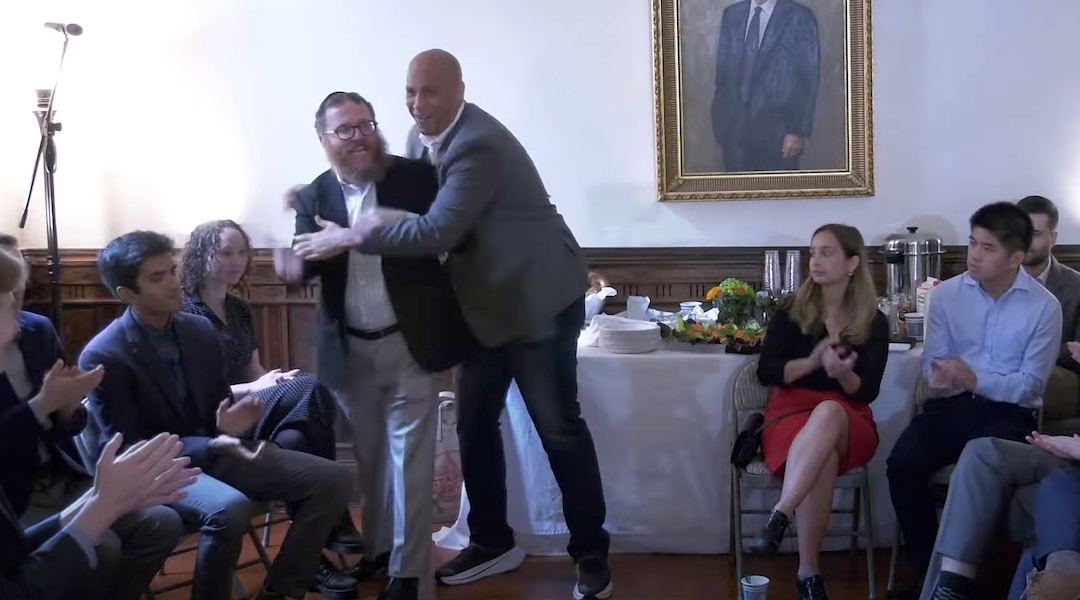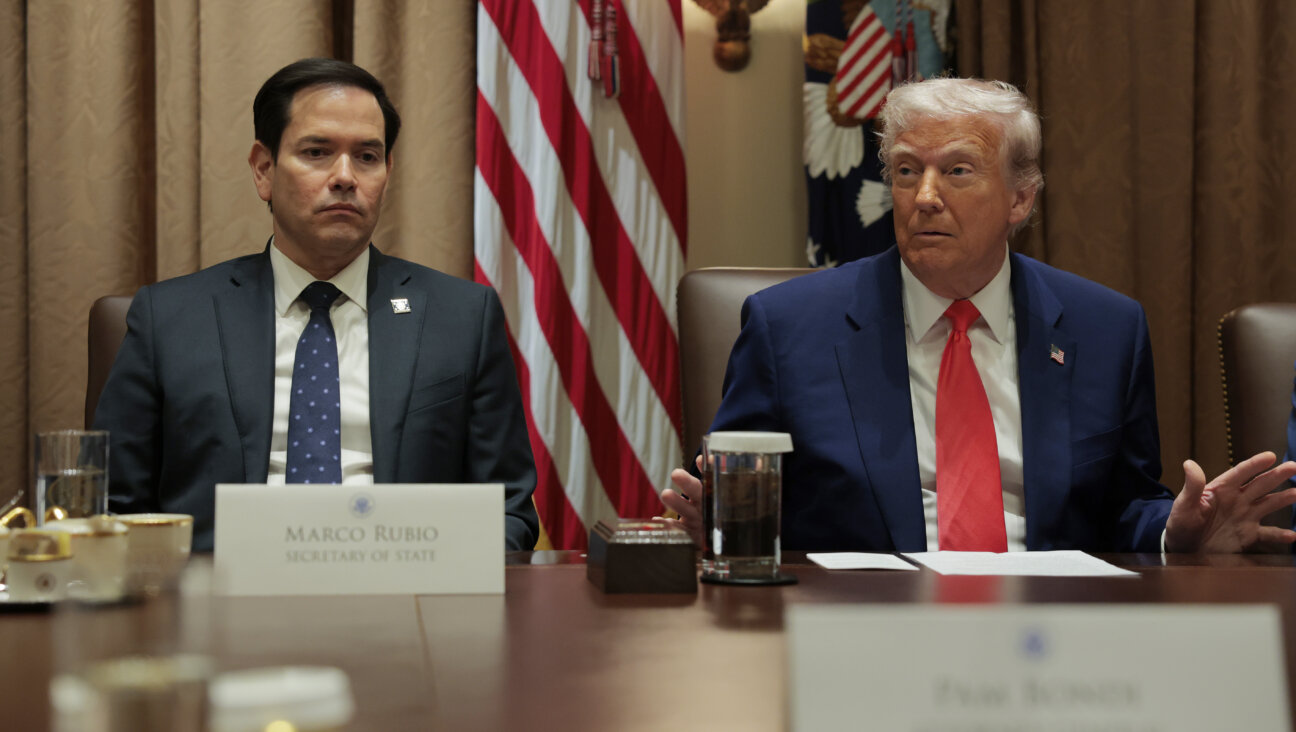Ten Years After Schneerson’s Death, Lubavitch Movement Flourishes
This is the first in a series about the progress of the Lubavitch movement since the death of Rabbi Menachem Mendel Schneerson.
Rabbi Menachem Mendel Schneerson, the charismatic head of the Lubavitch chasidic movement, died 10 years ago this week, leaving both followers and observers wondering about the future of the highly successful religious organization.
Contrary to lugubrious projections, statistics provided by the organization indicate that Lubavitch’s outreach effort has approximately doubled in size since 1994. While no one speaks with the authority with which Schneerson did, it may not matter. In fact, his death may have left a salutary vacuum. In a series of interviews conducted by the Forward, leaders of the movement talked about its enormous growth, which they ascribed to three factors that emerged during the past decade: the emotional pull of the rabbi’s memory, an increasingly decentralized organizational structure, and a greater level of familiarity with Lubavitch among Jews around the world.
In contrast to the predictions of doom from those outside the movement before Schneerson’s death, leaders ascribed a good measure of their success to its after-effects. While they often use indirect language, Lubavitch leaders describe a movement that has been invigorated by a devotion to the agenda of Schneerson, who was called “the Rebbe” by his followers.
“We have intensified our efforts because we feel that the mandate and the mission that the Rebbe wanted us to do has fallen even harder on our shoulders,” said Lubavitch’s Illinois Head of State Rabbi Daniel Moscowitz.
Outreach, the main activity of Lubavitch, is accomplished with shlichim, or emissaries, stationed in communities throughout the world and who fulfill standard rabbinic duties, such as leading Sabbath services, as well as more aggressive outreach efforts, including trawling the streets in search of Jewish men to don tefillin.
Since Schneerson’s death, the emissaries say that they feel more respect and admiration when they visit Lubavitch headquarters in Brooklyn. This shift also has a theological element: Because Schneerson’s main agenda was outreach, the emissaries themselves have become the best remaining embodiment of the Rebbe’s essence; the best way to be in touch with that essence, then, is to be a shliach, or at least to support one.
Perhaps more interestingly, the leadership has evolved in some surprising ways, a change that is reflected best in its shliach program.
For the past half-century, Lubavitch’s leadership has consisted of three corporations: Agudas Chassidei Chabad-Lubavitch is an umbrella organization that oversees the entirety of the Lubavitch movement; Machne Israel and Merkos L’Inyonei Chinuch are responsible, respectively, for the educational and social welfare aspects of the movement’s shlichim and their outreach activity.
The emissary system created by Schneerson evolved from a core group of several individuals sent in tours across the United States in the 1950s to a system that had rabbinic couples making life-long commitments to certain areas, eventually growing operations there to the point that they hired additional couples to work below them; these initial shlichim eventually became “heads of state,” overseeing multiple operations. Most Lubavitch programs — whether the famous “mitzvah tanks” or even the institution of the college campus Chabad House — were ideas originally generated by individual shlichim that achieved local success and were then imitated elsewhere. Rabbi Shlomo Cunin, head of state in California, claims both of those programs and more, including AskMoses.com, a Web site for those with questions about Judaism.
Though the organization did receive a good deal of its energy from the grassroots, many worried that without Schneerson’s hands-on influence, the wheels would not turn as smoothly. Before his death, Schneerson himself moved to makes changes, beginning first with the umbrella organization.
In the mid-1980s, according to members of Agudas, Schneerson began a renewal of the oversight organization, bringing in several new members and, after the death of his wife in 1988, embarking on an effort to ensure the movement’s continuity after his death. In a hastily called meeting after the High Holy Days that year, Agudas members told the Forward, Schneerson detailed the methodology by which the board members should oversee the outreach movement that he had crafted since the 1950s. At that point, Schneerson also instructed Agudas and the members of his secretariat to help draft his will and to check the incorporations of all Lubavitch institutions, setting the stage for a transition period that would help the movement survive his death.
“I’m not sure that we had things that were given that were exactly new, that we didn’t know… what we found out was that the Rebbe put this on our shoulders,” said Rabbi Moshe Herson, head of the Lubavitch Rabbinical College in Morristown, N.J., and a member of Agudas. Rabbi Herson was one of the attendants at the 1988 meeting. He added that Schneerson, “wanted the Lubavitch institutions… [to] be protected legally from any discrepancies and any problems.”
Memberships on all three boards gradually evolved to reflect the movement’s greater emphasis on decentralization. Of the eight members of the umbrella organization, seven joined the board as part of or since the transition period begun by Schneerson, and all but one — Rabbi Yehuda Krinsky, a member of the Rebbe’s secretariat — have primary duties as shlichim. These six are based far from Lubavitch World Headquarters, at the famous address of 770 Eastern Parkway in Crown Heights, Brooklyn, where Schneerson held court. (Indeed, the heart of Lubavitch activity may now be a title appropriate not just for Crown Heights but for cities like Moscow and Los Angeles as well, where significant outreach operations are in place). In addition, five newer members of Merkos and three newer members of Machne — the memberships of which often overlap with each other and occasionally with Agudas — who were added over the past decade are shlichim.
The utilization of top senior shlichim within Lubavitch’s administration has also allowed for a more sophisticated training and oversight of younger emissaries.
“The people who were added, being shluchim and responsible people in their states or countries, it added a lot more expertise, experience, of people in the field,” said Herson.
In addition, the Lubavitch leadership commands relatively little reverence among members of the movement, especially compared to the veneration received by rabbis in other movements. Shlichim rarely refer to Krinsky and others with the honorific “Rabbi,” and many are quick to point out leadership shortcomings. Even members of the leadership bodies themselves resist claims emphasizing their influence, objecting to the term “leadership” and preferring instead to be referred to as “overseers” or “facilitators.”
Finally, many leaders reached by the Forward attributed the movement’s growth to the increasing, and relatively recent, mainstreaming of the Lubavitch movement in the eyes of Jews throughout the United States and the world.
“When you go today to a community-wide walk-a-thon… and you ask people to put on tefillin, it’s incredible to see that there’s a response, that there’s a very warm response,” said Rabbi Zalman Grossbaum, head of state in Toronto, Canada, and a member of Merkos. “Today from teenagers and young adults, you hardly get resistance!”
Lubavitch in North America — where shlichus has been going on longest — currently has full-time operations on 72 college campuses (with plans to be on 100 within two years), and in all but five U.S. states. The Jewish Learning Institute, its program that provides a three-year, college-level Jewish education for adults, has spread to 83 cities.
Initially, some emissaries reported chilly receptions in certain communities, from the community members as well as from communal organizations, and Lubavitch found itself in competition with Reform and Conservative synagogue movements and organizations like United Jewish Communities, which were likely to target the same unaffiliated or non-Orthodox Jews. Indeed, Lubavitch mined these communities and acquired a significant membership and donor base of non-Orthodox Jews who attend or fund their programs.
But recently, some of the competitive tension has dissipated. Several pulpits of mainstream Orthodox synagogues have been given to Lubavitch rabbis and, in some places, Lubavitch stopped competing with organizations and began working with them.
In Orange County, Calif., for example, Lubavitch has become intertwined with the local federation. Bunnie Mauldin, the executive director of the Jewish Federation of Orange County, has been working with Lubavitch for the six years she’s held her position. But this wasn’t always the case for her Federation.
“[Lubavitch institutions] felt slighted regarding our community foundation… and they were told basically that it had to do with the donors and the donors’ preference,” she said. “I think that was an excuse.”
In contrast, under her leadership, the Federation has provided funding for Lubavitch programs and has included Lubavitch in communitywide events. Rabbi Dovid Eliezrie, a local shliach, is a member of the Federation board who has worked with Mauldin on a number of programs, ranging from missions to Israel to ensuring that kosher food is available at Federation events. And the lesson may have been learned on both sides: Federation leaders are now seeking out guidance from their Lubavitch colleagues.
“I certainly think we can take a lesson about what to do [from Lubavitch], because they’re successful,” said Mauldin. “They are probably the best fund-raisers in the community, and they are excellent in outreach and education, and those are three things that the Federation does, and we don’t do it as well as them.”
Next week: Thornier issues emerge as the Lubavitch movement moves into Europe.
The Forward is free to read, but it isn’t free to produce

I hope you appreciated this article. Before you go, I’d like to ask you to please support the Forward.
Now more than ever, American Jews need independent news they can trust, with reporting driven by truth, not ideology. We serve you, not any ideological agenda.
At a time when other newsrooms are closing or cutting back, the Forward has removed its paywall and invested additional resources to report on the ground from Israel and around the U.S. on the impact of the war, rising antisemitism and polarized discourse.
This is a great time to support independent Jewish journalism you rely on. Make a gift today!
— Rachel Fishman Feddersen, Publisher and CEO
Support our mission to tell the Jewish story fully and fairly.
Most Popular
- 1

Opinion The dangerous Nazi legend behind Trump’s ruthless grab for power
- 2
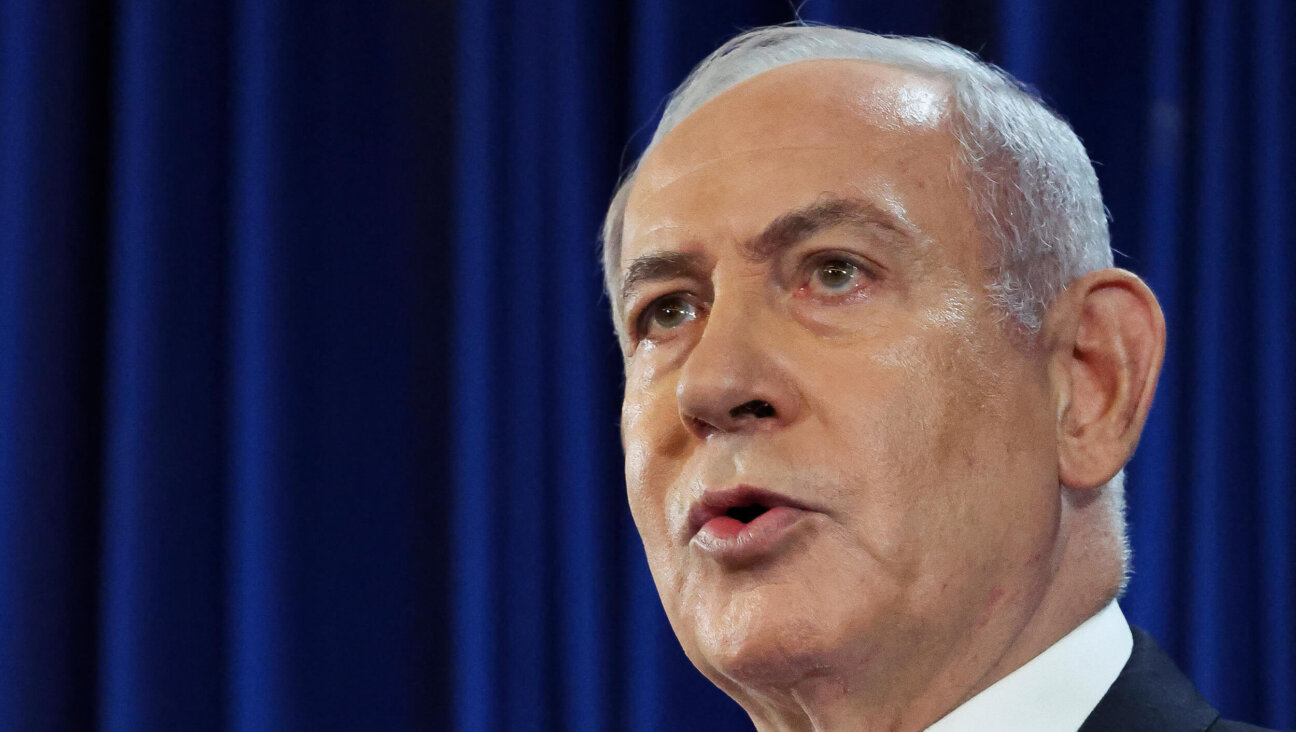
Opinion I first met Netanyahu in 1988. Here’s how he became the most destructive leader in Israel’s history.
- 3

News Who is Alan Garber, the Jewish Harvard president who stood up to Trump over antisemitism?
- 4

Culture Did this Jewish literary titan have the right idea about Harry Potter and J.K. Rowling after all?
In Case You Missed It
-
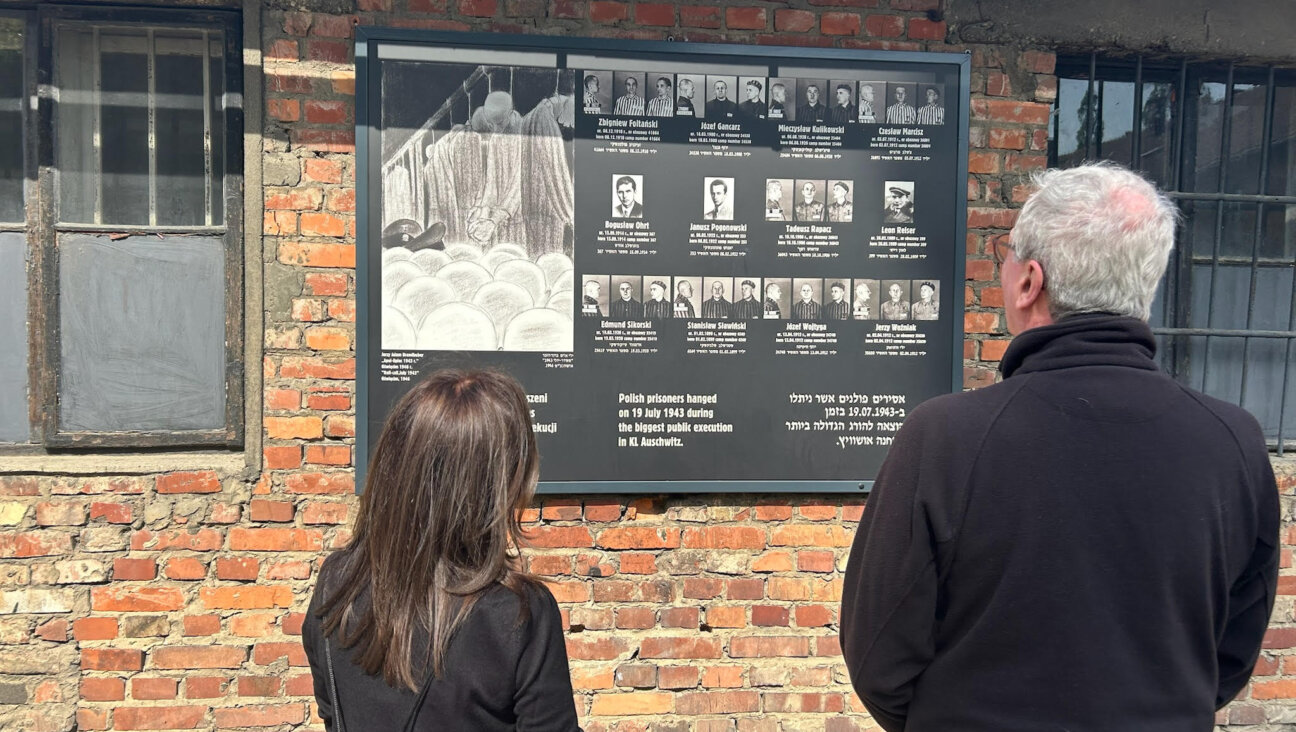
Fast Forward On his first trip to Auschwitz, New Jersey governor urges vigilance against rising antisemitism
-
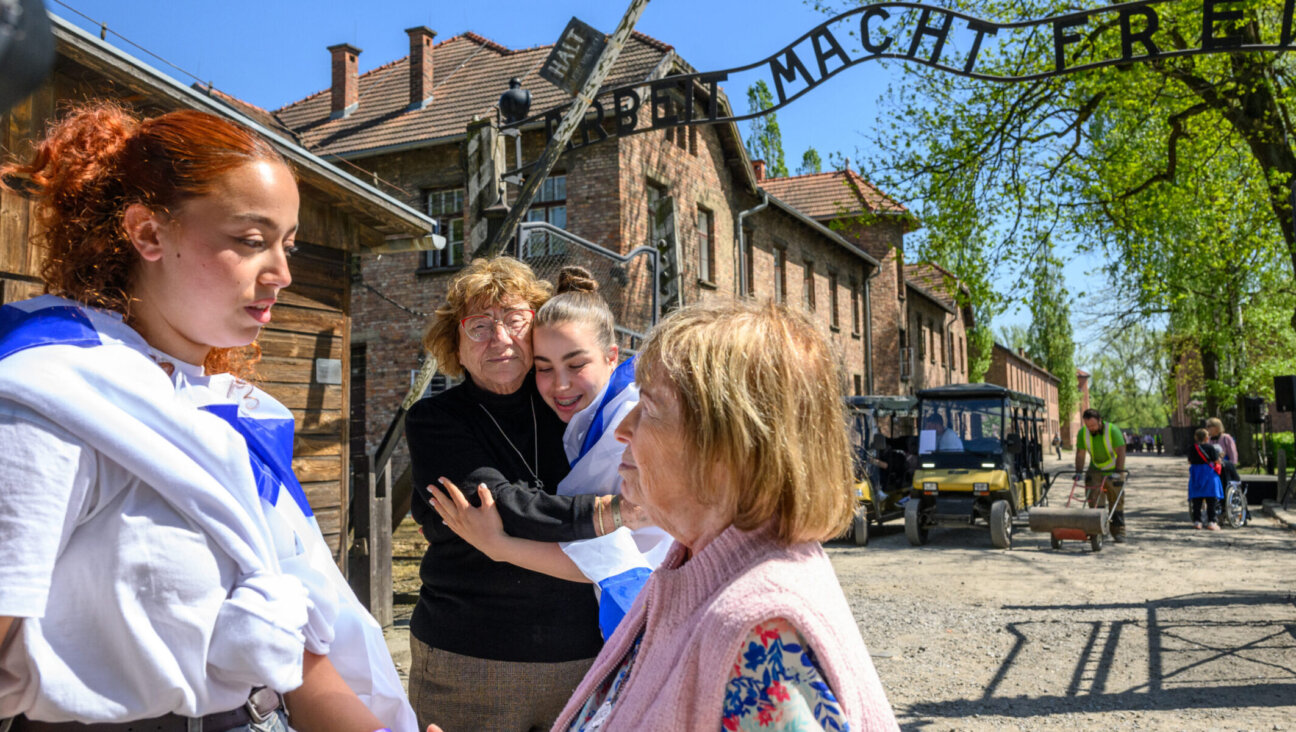
Fast Forward Survivors of the Holocaust and Oct. 7 embrace at Auschwitz, marking annual March of the Living
-

Fast Forward Could changes at the FDA call the kosher status of milk into question? Many are asking.
-
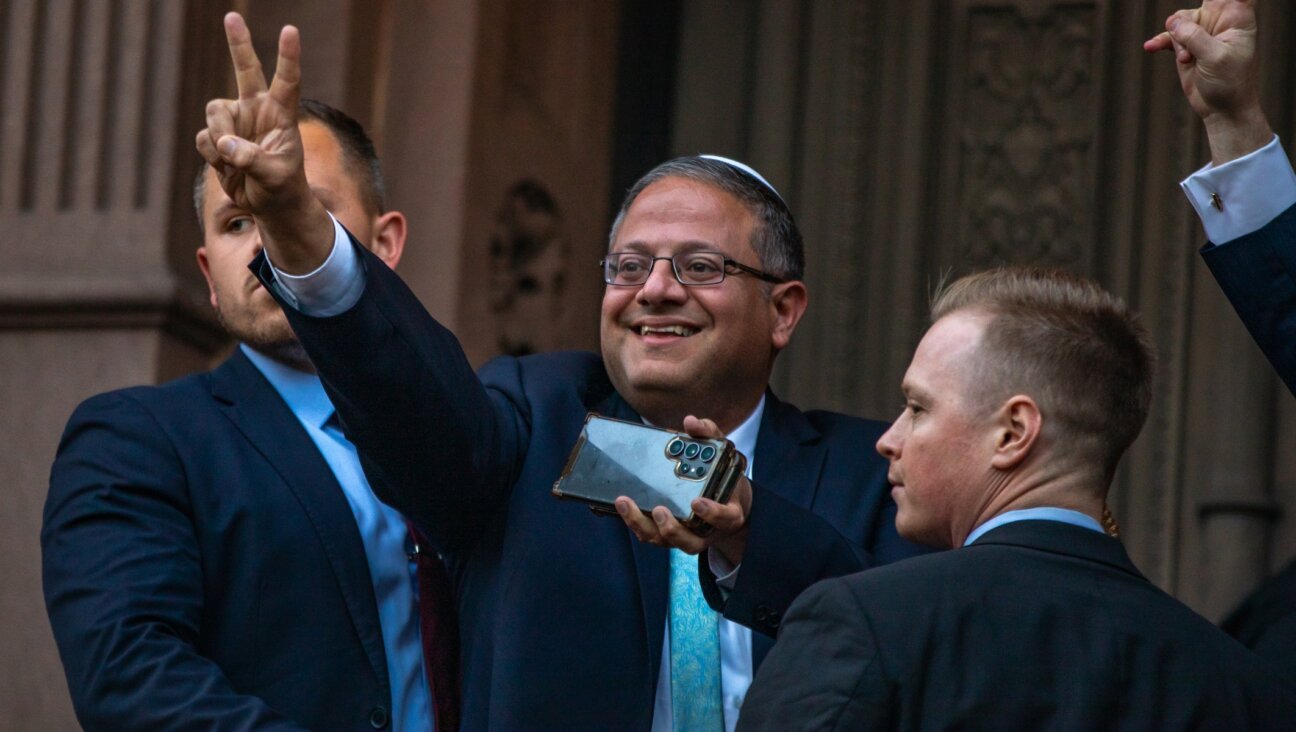
Fast Forward Long Island synagogue cancels Ben-Gvir talk amid wide tensions over whether to host him
-
Shop the Forward Store
100% of profits support our journalism
Republish This Story
Please read before republishing
We’re happy to make this story available to republish for free, unless it originated with JTA, Haaretz or another publication (as indicated on the article) and as long as you follow our guidelines.
You must comply with the following:
- Credit the Forward
- Retain our pixel
- Preserve our canonical link in Google search
- Add a noindex tag in Google search
See our full guidelines for more information, and this guide for detail about canonical URLs.
To republish, copy the HTML by clicking on the yellow button to the right; it includes our tracking pixel, all paragraph styles and hyperlinks, the author byline and credit to the Forward. It does not include images; to avoid copyright violations, you must add them manually, following our guidelines. Please email us at [email protected], subject line “republish,” with any questions or to let us know what stories you’re picking up.







